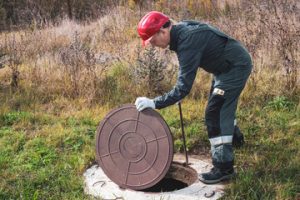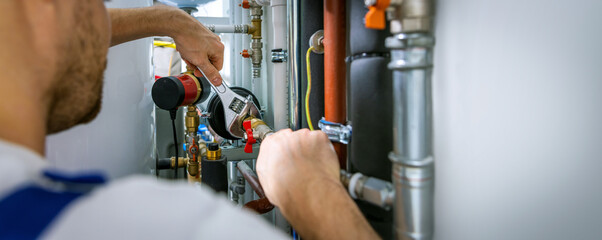Clean water begins where it ends. Beneath our homes, unseen systems quietly protect the balance of life. Septic services play a role far deeper than simple maintenance. They safeguard the invisible ecosystem sustaining every drop we use.

The science behind septic systems is one of patience and precision. Every layer of soil, bacteria, and water interacts harmoniously. Waste transforms into treated water through natural processes. Yet this balance is fragile, demanding human respect and responsibility. Visit https://septic-guys.com/ to learn more.
Modern septic services have evolved beyond pumping and repair. They now blend environmental engineering with biological understanding. The goal is not just function but sustainability. A system must protect both people and the planet.
Technology has refined how septic systems are managed. Sensors can now detect early signs of imbalance. Data analytics predict failures before they happen. Preventive care replaces emergency intervention.
Every household’s waste becomes a test of design and discipline. Septic systems must adapt to lifestyle changes and water habits. The volume, chemical use, and drainage all shape system health. Small actions above ground ripple through layers below.
Professional septic care now integrates ecology with efficiency. Experts study soil absorption, bacterial vitality, and fluid dynamics. The system becomes a living organism requiring regular nourishment. Maintenance becomes stewardship, not routine.
Eco-friendly treatments are replacing harsh chemicals. Biological additives boost natural bacterial cycles without harming soil. These advances strengthen purification instead of weakening it. Nature becomes both teacher and partner.
A neglected septic system doesn’t just break; it pollutes. Contamination seeps into groundwater, spreading silently. Repairing that damage often takes years. Prevention remains the most powerful act of protection.
Septic services also play a hidden role in community health. Proper maintenance prevents disease spread and protects agriculture. Clean water sustains more than convenience—it preserves civilization. The foundation of hygiene is buried in the soil.
The evolution of design emphasizes long-term sustainability. Engineers now create modular systems that adjust to demand. Compact, self-monitoring tanks ensure efficiency even in limited spaces. Smart design reduces human error.
Education forms the heart of effective maintenance. Homeowners who understand their system’s ecosystem reduce strain. Septic professionals now serve as educators as much as technicians. Knowledge is the most sustainable form of service.
Innovation in waste treatment is redefining the field. Some systems recycle treated water for irrigation or energy recovery. Circular models turn waste into resource. What was once discarded now becomes value.
The relationship between septic services and climate resilience is growing. As rainfall patterns shift, drainage systems must adapt. Soil permeability and tank durability now intersect with environmental forecasting. The system’s success depends on foresight.
Septic maintenance reflects our relationship with waste itself. It challenges how we perceive disposal—not as disappearance but transformation. Every flush begins a chemical conversation beneath the ground. Responsibility lies in ensuring it ends cleanly.
Microbial health has become a metric of system performance. The diversity of bacteria inside tanks mirrors that of natural wetlands. Professionals now cultivate balance rather than eliminate bacteria. Cleanliness arises from cooperation, not sterilization.
Energy-efficient pumping and inspection tools are changing operations. Remote monitoring reduces unnecessary travel and emissions. Technicians analyze data before visiting the site. Service becomes smarter, faster, and greener.
New materials also redefine durability. Reinforced composites resist corrosion better than traditional metals. These innovations extend the system’s lifespan significantly. The result is lower cost and higher reliability.
The economics of septic care are shifting toward sustainability. Investing in prevention now saves more than repair later. Governments and homeowners alike begin to recognize its value. Health and economy intertwine beneath every backyard.
In rural and off-grid areas, septic systems remain lifelines. Without centralized infrastructure, they embody independence. Yet with independence comes responsibility. Proper care ensures resilience in isolation.
Septic design today incorporates hydrology and microbiology seamlessly. Engineers map how water moves through layers and how microbes respond. It’s a collaboration of nature and technology. The ground becomes a laboratory of balance.
Odor control has evolved with science too. Modern systems neutralize gases through biological filtration. The air remains clean, the ground undisturbed. Comfort merges with conservation.
Safety protocols have grown more sophisticated. Professionals wear advanced sensors and protective gear to detect gases. The industry prioritizes health as much as efficiency. A clean system begins with protected workers.
Public perception of septic care is slowly transforming. What was once seen as dirty labor is now environmental science. Each inspection contributes to water preservation. The work carries quiet nobility.
As urban expansion continues, hybrid systems emerge. These combine centralized treatment with local filtration. They reduce infrastructure strain and improve resilience. The line between rural and urban sanitation blurs.
Water scarcity intensifies the need for efficient treatment. Septic services help recycle resources through filtration recovery. Every system becomes a micro water plant. The sustainability cycle starts and ends underground.
Education programs are expanding to schools and communities. Awareness campaigns teach people how waste and water connect. Knowledge creates respect for hidden infrastructure. Children grow into guardians of clean water.
Regulations evolve alongside innovation. Governments now integrate septic monitoring into environmental policies. Compliance ensures shared accountability. Clean water becomes a collective contract.
Artificial intelligence is quietly entering the septic world. Predictive models analyze weather, soil, and usage data to prevent overflow. The system learns like an organism. Intelligence integrates into waste management.
Sustainability now extends beyond technical maintenance. Ethical waste disposal considers long-term ecological balance. Septic services embody that philosophy through continuous adaptation. The goal is regeneration, not just containment.
In architecture, septic integration influences green building design. Eco-homes rely on compact, efficient treatment units. The concept of waste-free living becomes tangible. Septic care becomes a feature of modern sustainability.
The aesthetic of invisibility defines septic systems. Their success lies in absence—no noise, no smell, no sign. Yet this invisibility hides profound importance. It’s the infrastructure of peace of mind.
Emergency response within septic care has advanced too. Rapid containment strategies prevent contamination spread. Data-driven mapping identifies risk zones immediately. Precision replaces panic.
The connection between septic systems and biodiversity is gaining attention. Healthy soil ecosystems thrive when waste is treated properly. Nature benefits from unseen stewardship. Life underground sustains life above.
Cultural attitudes toward waste differ across societies. In many places, the shift toward conscious care is just beginning. Septic education bridges that gap universally. Clean water becomes a shared language.
Innovation continues to merge with craftsmanship. Technicians now combine digital tools with traditional experience. They read soil texture like code and sense flow like rhythm. Septic care becomes both science and art.
Future systems may become entirely self-sustaining. Organic energy recovery could power the home itself. Waste will no longer end in disposal—it will begin a cycle of creation. The line between waste and resource will dissolve.
Even the simplest act of regular inspection carries ecological weight. A small maintenance task prevents years of damage. Septic services turn responsibility into resilience. The smallest discipline protects the largest resource.
The psychology of cleanliness extends underground. People often disconnect from what they cannot see. Septic services restore that awareness gently. They remind us that purity begins beneath our feet.
Digital mapping is transforming record-keeping. Every system now carries its own maintenance history. This transparency builds trust and accountability. Technology becomes the guardian of integrity.
Smart septic innovations may soon integrate with home ecosystems. Water usage, temperature, and soil data will synchronize. The system will self-correct when imbalance begins. Homes will monitor their health like living bodies.
Yet even as automation advances, human expertise remains irreplaceable. Machines can measure, but humans interpret. The future of septic services depends on collaboration between both. Intelligence grows through partnership.
Ethical standards guide this industry’s next chapter. Environmental justice ensures clean water access for all communities. Septic care becomes a moral responsibility, not just a technical one. Every service performed protects collective well-being.
The unseen engineers of sanitation carry quiet heroism. Their work keeps disease at bay and ecosystems thriving. Septic maintenance is civilization’s most invisible achievement. Its silence is the sound of balance.
As technology deepens and awareness grows, septic care enters a new era. It’s no longer about fixing failure—it’s about preventing it elegantly. The system beneath us becomes a mirror of our values. Clean water, after all, begins with clean choices.
In the grand rhythm of human progress, septic services remain unsung yet essential. They connect science, ethics, and ecology in one continuous flow. Each pipe and tank tells a story of responsibility. The future will belong to those who care for what lies beneath.
